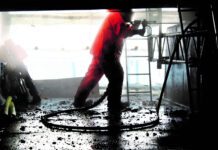With public attention on corporate environmental activities, there is particular pressure on industrial companies to limit their impact on the local water environment, says Adam Parmenter, industrial sales manager at WPL.
Scrutiny of the water sector’s environmental performance has intensified over the past two years, catalysed in part by a heightened public appreciation of nature and outdoor spaces.
A major investigation into the management of wastewater treatment works in England was announced by the EA and Ofwat in November 2021, at the same time as a new Environment Act became law. These measures remove any doubt that the expectations being placed on the sector are immense. Industrial and manufacturing businesses that treat their wastewater onsite and discharge it to a public sewer may find this trend is reflected in tighter trade effluent standards set by water companies.
Precise water quality parameters vary from site to site, but all trade effluent permits include a set measurement for chemical oxygen demand (COD), an indicator of the amount of oxygen required to break down pollutants in water. COD determines the effect treated effluent will have on the receiving watercourse – and the number needs to be as low as possible.
Once companies have removed as much COD as possible using screening and solid removal processes, they may find they still need to reduce the levels of organics further to comply with regulations. This is where biological treatment comes into play.
Biological wastewater processing technologies such as WPL’s Hybrid-SAF are effective in reducing COD to the levels set by water companies, however stringent. They can also meet environmental requirements on biochemical oxygen demand (BOD) and ammonia. Additional stages can be added to the process train to remove pollutants such as phosphorous where required by a permit.
The option of hiring offers immediate enhancement to onsite effluent treatment, meaning compliance is achieved and businesses have breathing space to plan out a permanent fix.







